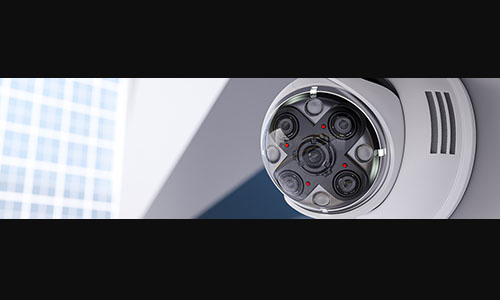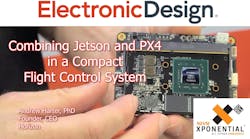There was a lot more at the 2016 Consumer Electronics Show than the latest smartphones and HDTVs. There were technologies like Bluetooth mesh and far-field voice processing, but most of these were on display behind closed doors in hotel meeting rooms or in private meeting rooms on the show floor.
There were technologies like automotive Ethernet that are emerging(see “Automotive Ethernet Was the Hidden Trend at CES 2016” on electronicdesign.com). I also sawCima NanoTech’sSANTE (self-assembling nanoparticle technology) technology, which supports very-large-screen capacitive touchscreens(see “The Best of CES 2016: Day 1” on electronicdesign.com).
当然,有很多,这里有一些of those innovations I saw at the show.
Bluetooth Moves to a Mesh
Bluetooth is an integral part of the Internet of Thing (IoT), providing a wireless link between devices. It was originally for personal area networking to link devices like headphones and headsets to smartphones. There have been a host of enhancements and new standards along the way, providing new protocols, higher speeds, and new features like beacon support.
Bluetooth was initially complementary to platforms like WiFi and ZigBee, but Bluetooth is starting to pick up features found in these other platforms. For example, one of ZigBee’s advantages has been its mesh network support.
Cypress Semiconductorwas showcasing three Bluetooth Low Energy modules(Fig. 1)and demonstrating support for Bluetooth Smart Mesh. Mesh networking significantly extends the reach of Bluetooth devices. It can handle up to 65 K devices. Messages can be sent to individual nodes or subgroups or groups of devices.
The EZ-BLE PRoC modules are built around an ARM Cortex-M0 core. They include a pair of crystals, an on-board antenna, metal shield, and passive components. The three new EZ-BLE PRoC modules include the CYBLE-222005-00, CYBLE-012011-00, and CYBLE-012012-10. They are built onCypress’ PSoC configurable architecture.
The CYBLE-222005-00 incorporates the CapSense capacitive touch-sensing technology. It has 256 Kbytes of flash memory and 32 Kbytes of SRAM. It has a compact 10-mm by 10-mm by 1.8-mm form factor. The CYBLE-012011-00 module also integrates CapSense with 128 Kbytes of flash memory with 16 Kbytes of SRAM. The CYBLE-012012-10 module eliminates the RF metal shield to minimize its height, fitting into a 14.5-mm by 19.2-mm by 1.55-mm form factor. This module is not certified.
Audio Advancements
Voice control is becoming more accurate and more important for mobile devices. The challenge is blending the necessary performance with low power requirements.
Conexant’s最新AudioSmart soc地址移动应用程序and far-field voice processing. Its CX20926 low-power audio/sensor SoC delivers voice control to low-power, battery-powered devices such as wearables and headsets. It differs from alternatives with always-on operation allowing voice-activated wake-up capabilities so a device can operate with minimal power when not in use.
The CX20926 is built around a 32-bit, 50 MHz ARM Cortex-M0+ core. It also incorporates a high-performance, dual-core, 100 MHz 32-bit audio DSP. It also includes two stereo PDM digital microphone interfaces and an I2C sensor interface. The platform is designed to run Conexant’s Smart Source Pickup (SSP) noise suppression algorithm. SSP can cut through noise from playback of a device’s speaker as well as environmental noise, so speech can come from any angle relative to the system’s microphones. The CX20926 comes in a 50-QFN package. Pricing starts at $3.49.
The CX20924 Smart Source Locator SoC is a 4-microphone, far-field voice input processor. The 4-microphone system is designed for 360-deg. voice-location capabilities to deliver excellent speech recognition for smart-voice applications for voices up to five meters away. Pricing starts at $6.21.
High-Performance Graphics Tackle Vision Applications
Vision systems are becoming critical in applications from automotive to robotics. The challenge is balancing functionality and performance with power efficiency.
Imagination Technologies’ PowerVR graphics support is cropping up everywhere like Renesas’ R-Car H3 SoC. It has a PowerVR GX6650 GPU with 192 ALU cores and hardware virtualization. The R-Car H3 chip can handle cognitive computing and human-machine interface (HMI) support. It is also being used for advanced driving support systems (ADASs) and in-vehicle infotainment (IVI) systems.
Imagination introduced the PowerVR Series7XT Plus GPU. It extends Imagination’s Series7XT lineup and adds support for OpenCL 2.0. It also supports OpenGL ES 3.2 and Vulkan. The architecture is optimized for vision processing and computational photography. The current Series7XT Plus GPUs includes the GT7200 Plus GPU with 64 ALU cores and the GT7400 Plus GPU with 128 ALU cores. The systems provide four times the performance for OpenVX vision applications.
The Series7XT Plus GPUs have improved in-system performance and efficiency. Improvements include support for the latest bus interface features including requestor priority support, doubled memory burst sizes to match the latest system fabrics, and tuned size plus improved cache efficiency to enhance reduced bandwidth by 10%.
High-Performance Networking
High-performance networking is critical to the success of the cloud and IoT.Marvelland Broadcom had new networking technologies on display for the next generation of wireless routers and gateways.
Marvell无敌舰队3700年SoC目标物联网b and gateway applications including media-attached network storage, mobile-attached network storage, and distributed cloud SSD/HDD storage. It is also a great platform for building retail Wi-Fi routers and Wi-Fi repeater. The family is based on the modular chip MoChi architecture(Fig. 2)to build virtual SoCs (VSoC). Peripherals are linked via MoChi interconnects that are based on a packetized and serialized extension of on-die AXI bus that operate at 8 Gbits/s.
The ARMADA 3700 is a low-power solution that can even work in mobile, battery-operated applications. It has a pair of 64-bit, 1.2 GHz Cortex-A53 cores with support for PCI Express, USB 3.0, SATA 3.0, and dual Ethernet ports. Ethernet support includes 1 Gbit/s as well as 2.5 Gbit/s (NBase-T). The chips also haveARMTrustZone security and data acceleration engines to enhance networking, storage, and compute applications.
Broadcom’s 28 nm BCM4908 has four 1.8 GHz, 64-bit ARMv8-A cores. It also incorporatesBroadcom’s Runner network packet processor that can deliver more than 5 Gbits/s of WiFi throughput independent of the processor cores. Its Ethernet ports can also handle 1 and 2.5 Gbit/s rates. The chip also has SATA 3.0 port, two USB 3.0 ports and three PCI Express Gen 2 ports.
TheBCM4908is designed to work withBroadcom’s tri-band (AC5300) 5G WiFi XStream 802.11ac MU-MIMO using threeBCM43664x4 radios. These have an integrated CPU to offload theBCM4908.

















